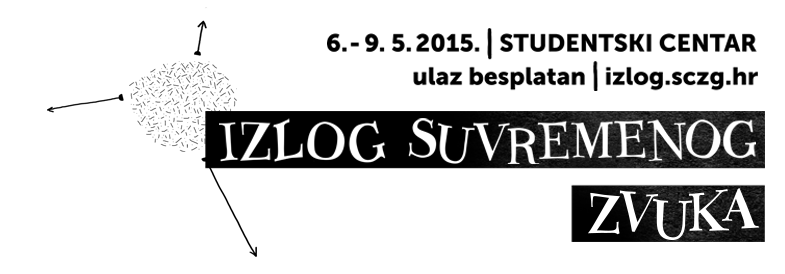
Ensemble Studio6 & Richard Barrett

09.05./20.30h / Ensemble Studio 6 & Richard Barrett @ &TD big hall (85′)
Ensemble Studio6 gathers musicians with great international experience in contemporary, classical and improvised music, based in Belgrade or Novi Sad. It was founded in 2012 when Milana Zarić and Nenad Marković came back to Serbia after a number of years in the Netherlands, Germany and Switzerland, where they were studying and performing contemporary music. Joined by musicians with similar experience, they formed an ensemble that advocates implementation of the current European art music as a part of the national culture and education. Artistic objective of the ensemble is to form a creative impact to the dialogue between the performing and creative in the art practices today. This unusual, modular system is dedicated to the sound space on the border with acoustics and electronics, specifics and case, score and performers’ decision.
The Studio6 Ensemble actively collaborates with authors such as: Richard Barrett, Heiner Goebbels, Agusti Fernandez, as well as many other middle generation authors (Jasna Veličković, Teodora Stepančić, Jürg Frey, Simon Steen-Andresen, Stevan Kovacz Tickmayer, Dave Fennessy and others). Special attention is given to the legacy of the late Ernö Király, a Yugoslav avant-garde composer, whose music is promoted and often performed on the original instruments citraphone and tablaphone. Also, Serbia has them to thank for a number of premieres of pieces by the 20thcentury composers like Kagel, Stockhausen, Cardew, Donatoni, Radulescu.
They will also perform this year at the BEMUS Festival, Composers’ Conference, Ring Ring Festival, Swiss Music Days Festival, as well as at the Serbian Cultural Centre in Paris, with the support of the Ministry of Culture of Serbia.
Participants at the concert: Richard Barrett (electronics), Vladimir Blagojević (accordeon), Svetlana Maraš (electronics), Nenad Marković (trumpet) and Milana Zarić (harp)
Programme:
Hugo Morales Murguia: Torque, for harp and pedal-propelled DC motors (2011)
In Torque the harp is explored as a perpetual string resonator. The vibration of different strings create clouds of overtones constantly changing over time. The harpist regulates the resonance of the instrument and controls the strings by manipulation of the pedals. Torque was commissioned and premiered in June 2011 at NEW Festival in Theater de Regentes (The Hague) by harpist Milana Zarić and was subsequently performed at BEAM, festival of electronic music at Brunel University (London).
Arturas Bumšteinas: Musikaliszer Pinkos, for trumpet and electronics (2013)
This music was inspired by “Musikaliszer Pinkos” – a collection of more than two hundred Hebrew religious hymns and Chassidic songs compiled and published by Abraham Berenstein in the year 1927 in Wilna (nowadays Vilnius). The selection of songs from “Musikaliszer Pinkos” was used by Arturas Bumšteinas as a source of fragmentary pitch material and re-interpreted in a new context of electronic sound and cut-up composition. All music was recorded with the use of Soviet-era Russian synthesizer Polyvox. The premiere of this project was presented as a 6-channel surround sound concert with additional improvisation parts provided by trumpetists Dominykas Vyšniauskas and Kamil Szuszkiewicz. The premiere performance took place in St. Catherine’s concert hall in Vilnius, during a festival Virtual Memorial.
Svetlana Maraš: Codon 24, for harp and live electronics (2014)
Harp is a source of more than 95% of the musical material of the piece. By using diverse range of extended techniques, harp is producing long, sustained tones and opposite to that short percussive and repetitive high-pitched sounds. These being looped according to certain algorithms, create mass of sound that is gradually transforming in color and texture. Sound sections span from massive low-frequency drones to intense high-pitched tones, glitches and noise.
Richard Barrett: pauk, for trumpet and accordeon (2014)
Richard Barrett: tendril, for harp and electronics (2013)
Richard Barrett: Codex XII, for ensemble (2013)
tendril, pauk and codex XII are three of the six parts of a 66-minutes composition entitled close-up which I have been working on together with Ensemble Studio6 since 2013 and which will receive its first complete performance in 2016. One of its principal features is a concern with music which reflects natural processes of growth, movement and decay: the shapes taken by tendrils, spiderwebs and many other phenomena from the microscopic to the ecological and from the momentary to the evolutionary. A characteristic feature of such processes is that they are driven by internal organising principles (like the DNA code) which are nevertheless highly flexible in their responses to different conditions, environments and other influences.
Accordingly, these compositions explore different ways in which precomposed musical elements are combined and confronted with spontaneous improvisation. In tendril for harp and electronics, the two performers have precisely-composed materials (notated and prerecorded respectively) which they may interrupt independently with improvisations which are influenced by the precomposed music without in any way being determined by it. Pauk for trumpet and accordeon explores a situation where the points at which improvisation takes place are specified by the score, although again the score contains no instructions on how the players might respond improvisationally. Codex XII may be played by almost any combination of five or more players. Here the score is reduced to a “skeleton” where players might at any time choose to follow one or more pathways consisting of pitches, textural indications, points of coordination and solo/accompaniment relationships, while almost always including the possibility to improvise freely and ignore the notations.
These different approaches to the relationship between notation and performances are, on the other hand, not intended to necessarily be heard as such, but to embody audible musical responses to the aforementioned natural phenomena, and to produce musical results in terms of structure and expression which couldn’t be achieved in any other way.
www.youtube.com/user/KolektivStudio6
richardbarrettmusic.com

